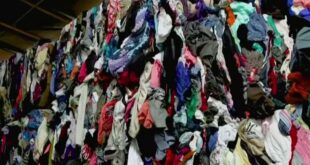Introduction
Fast fashion has become a popular retail business model that allows consumers to access trendy and budget-friendly garments. This retail strategy capitalizes on runway and celebrity apparel trends, allowing retailers to design and distribute cheap clothes that mimic higher-end styles. This article will explore the phenomenon of fast fashion, its pros and cons, and its impact on the environment and society.
What is Fast Fashion?
Fast fashion is an efficient retail model that relies on an agile supply chain to move designs from concept to physical product very quickly. This speed enables fashion retailers to offer the latest styles to their customers before they become yesterday’s news. Many retailers worldwide have adopted this business model. Zara, a Spanish apparel retailer, was an early adopter and could get an idea onto store shelves in just 15 days. Fast fashion retailers like H&M, Old Navy, and Forever 21, as well as online players like ASOS, SHEIN, Lulu’s, and NastyGal, also use this model.
Pros and Cons of Fast Fashion
Fast fashion is attractive to style-minded shoppers because it is affordable and convenient. It democratizes fashion, allowing anyone to dress like an A-lister. However, this business model has some serious trade-offs, including disposable consumerism, environmental damage, excessive landfill waste, energy inefficiency, and labor abuses. The U.S. Department of Labor reports that garments, footwear, and fashion accessories are commonly linked to labor violations.
However, there is a growing movement to encourage the fashion industry to be less toxic to the environment. Some fast fashion retailers, such as H&M and Zara, have responded by launching sustainable lines and/or environmental initiatives. Indications are that sustainable collections and initiatives will become more common in the coming years as more consumers choose to buy fewer, long-lasting garments instead of fast fashion.
Old Navy and Changing Consumer Preferences
Old Navy, a fast fashion brand owned by Gap, opened its first store in 1994 and was the clear star in Gap’s portfolio. However, in 2019, Gap announced it would spin off Old Navy into a separate company. The spin-off never happened, and Old Navy’s sales growth reversed. Consumer preferences were changing, as the environmental effects of throwaway clothes were becoming more widely known. Fast retailers like Forever 21, Charlotte Russe, and Payless Shoesource filed for bankruptcy. Zara went on the defensive and announced major sustainability initiatives. The pandemic further slowed sales for Old Navy and other fast fashion brands. However, global sales for Old Navy have returned, reaching over $9 billion in 2023. A report by Verified Market Research predicts that global sales for fast fashion will continue to grow, but brands are also looking to adopt more sustainable business practices going forward.
Conclusion
As more consumers become aware of the cost trade-offs of fast fashion, they can implement cost-effective strategies like shopping secondhand or subscribing to clothing rental services to avoid fast fashion. Ultimately, shoppers have a role to play in encouraging fashion retailers and manufacturers to adjust their practices and offer more sustainable and eco-friendly options in the future.
 Mind Uncharted Explore. Discover. Learn.
Mind Uncharted Explore. Discover. Learn.




